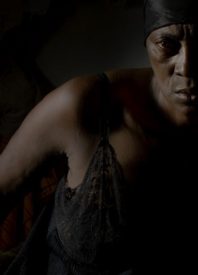
Pedro Costa has been working for five decades now but most critics know him for directing Colossal Youth. Coming out in 2006, other foreign films dwarfed that experimental underdog. That underdog status made some critics champion his more recent works like Horse Money and Vitalina Varela. TIFF to add the latter on its 2019 Wavelengths slate. The festival also included the film on its Best of the Decade list. It’s a strange introduction to the director’s filmography who himself uses baroque techniques to frame his characters. He introduces his titular protagonist, who has the same name in real life. With her bare feet she’s a Cape Verdean woman stepping onto Lisbon’s cold streets.
Costa lets his audience experience the large space she steps into even if he only shows them through close-ups. He then pushes us further Vitalina’s new community, Fontainhas, the neighborhood of her dead husband Joaquim. Costa depicts Fontainhas in perpetual nighttime. Darkness fills the streets and alleys familiar to the men who worked and lived with Joaquim. These men are her window to a man who left her, a stranger she still has attachments to. Costa is white and Vitalina, like most of the characters, are black. There’s an apprehension when a white director depicts black lives. But his minimal, Bressonian approach to character comes off as respectful here.
Just because Costa uses chiaroscuro doesn’t mean that he’s robbing us of detail. Vitalina Varela has so much detail, like which walls still have color and which ones have paint chipping away. Costa’s exquisite portraiture requires a trained eye as well as an ear, every sound deliberately conveying a sense of place. It adds to this film as simultaneously a biography that its lead actress cowrote. It’s also a series of portraits and still lives, occasionally depicting through objects the way a woman mourns with Fontainhas. These objects speak to a dignity in lives that Eurocrentic societies often disregard. This dignity shows through what Vitalina learns of Joaquim, his time in prison, his talent in cooking.
Vitalina also forges a bond with a local clergyman (Ventura), finding religion because of her loneliness. The film also hints at a subtext in depicting Joaquim’s life. It thus plays with this dissonance in learning when one learns about a person. Someone both capable of harming and helping others. It’s obvious that people in real life have shades of both good and evil. But it’s a lesson that most films forget. This film remembers that nuance. That most people have a second-hand conception of others who we think should be close to us. But we listen and search anyway, just like Vitalina, whose visions of her past complement her present.
Vitalina Varela is playing at the Virtual Cinema at the Paradise and at the Art Gallery of Hamilton.

